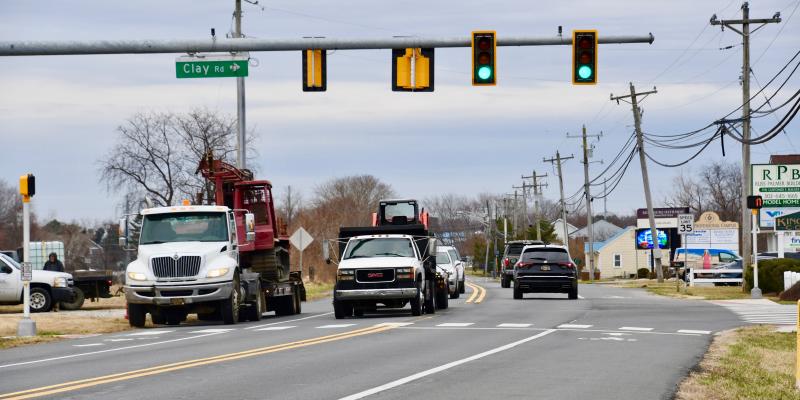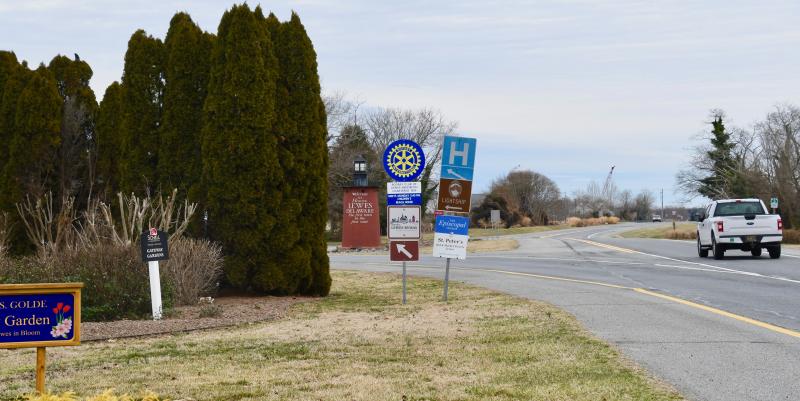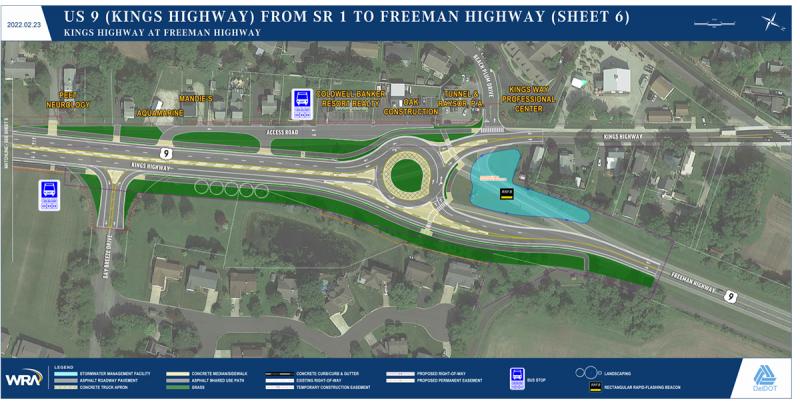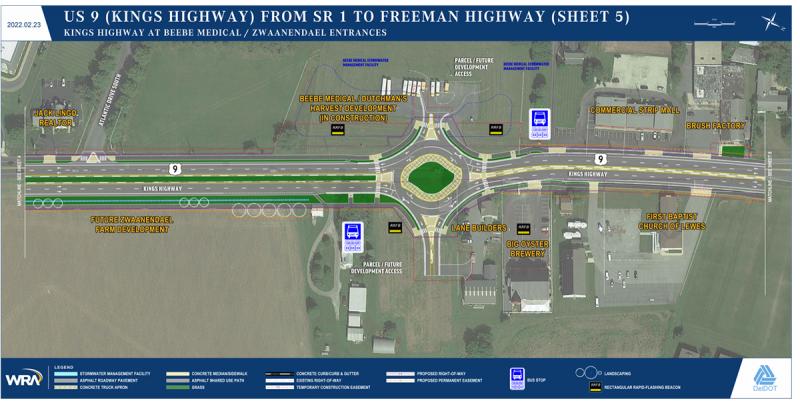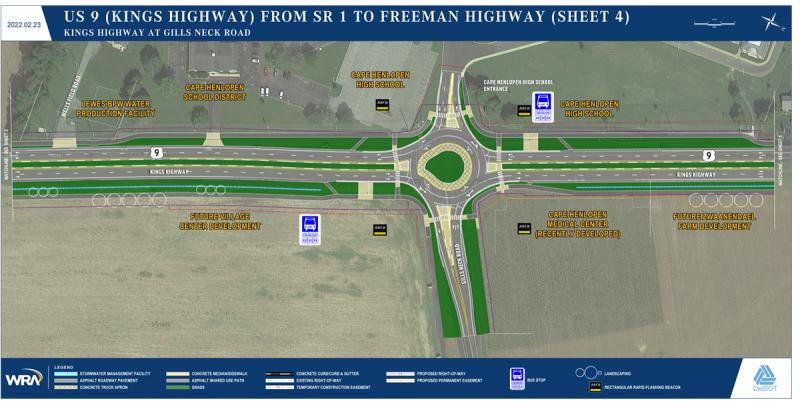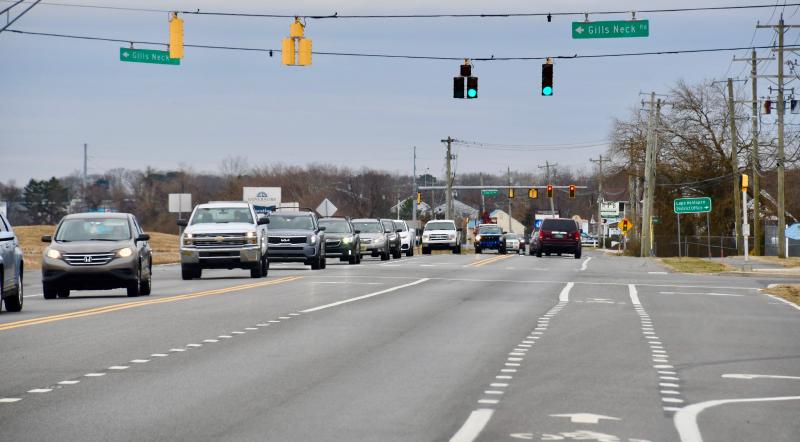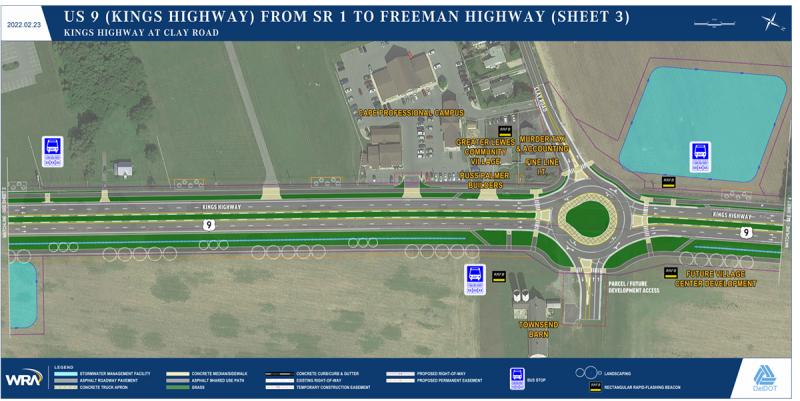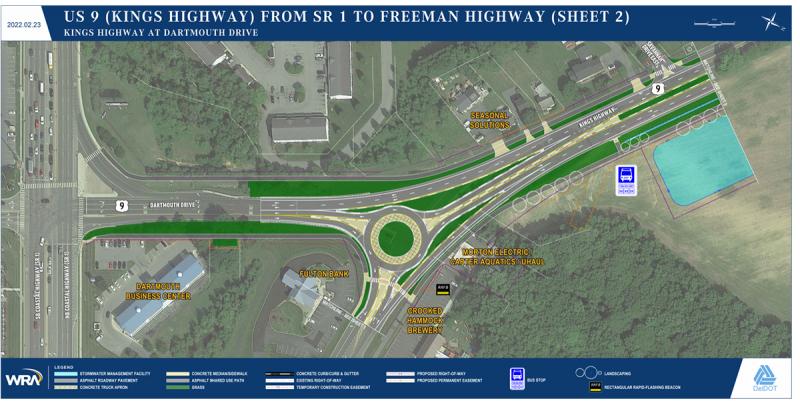Kings Highway project includes five roundabouts
A project to improve traffic flow and plan for future growth along Kings Highway in Lewes includes widening of the roadway to four lanes with shoulders and a shared-use path, and roundabouts at four existing intersections and one new intersection. There are no traffic signals included in the plans.
During a Feb. 23 virtual workshop, Delaware Department of Transportation officials presented the plans, solicited comments and answered questions about the long-awaited project. With a construction cost of $23 million, it is scheduled to get underway in fiscal year 2026, starting with a year of utility relocations and including two years of actual construction.
DelDOT staff will start rights-of-way acquisition during fiscal years 2023-25.
The corridor, one of three entrance roads into Lewes, also provides access to Beebe Healthcare, Cape May-Lewes Ferry and Cape Henlopen State Park.
The project area includes Kings Highway from Dartmouth Drive to the split at Freeman Highway with proposed roundabouts at the Dartmouth Drive, Clay Road, Gills Neck Road and Freeman Highway intersections. Another roundabout will be constructed at a new intersection created for access to the Lodge at Historic Lewes, a 175-unit senior-living facility now under construction, and the proposed housing and commercial projects at Zwaanendael Farm.
One of the features of the project is to eliminate left turns except in roundabouts. All entrance ways and driveways on the road will have right-in, right-out access. A service road is planned for access to businesses in the northern section, including Oak Construction and Coldwell Banker Resort Realty.
Along the byway
DelDOT engineer Bryan Behrens said the project will comply with many of the guidelines contained in the master plan for the area established by the City of Lewes and the Historic Lewes Byway committee. Kings Highway and Gills Neck Road are included in the byway.
He said the four-lane road will have a boulevard appearance with a 16-foot grass median in most places, and curbing and landscaping where feasible. There will be a 10-foot-wide shared-use path on both sides of the road with connections to the Junction & Breakwater and Lewes-to-Georgetown trails. A grass buffer will separate the path from the shoulder of the road.
The four travel lanes will be 11 feet wide with 5-foot shoulders. Behrens said some widths will be reduced slightly in the northern section of the project where there is not as much right of way available.
The existing Lewes in Bloom garden at the Freeman Highway split would be removed to make way for construction, and the Lewes lighthouse there would be relocated.
Behrens said there is enough green space in the corridor to plant a similar garden, and a landscaping plan is under review.
He said planting trees in the median will not occur, but other plantings that don't limit visibility or present a danger to motorists are possible.
Gail Van Gilder, a member of Historic Lewes Byway committee, said the organization has three major goals, including pedestrian and bicyclist safety, especially at crossings, greening of the corridor with a tree-lined boulevard, and sufficient Lewes gateway and byway signage.
“We look forward to partnering with DelDOT on these significant corridor-wide improvements. They will determine the future character of Lewes and impact the quality of life for both residents and tourists for generations to come,” Van Gilder said.
Addressing a question about landscaping maintenance, Behrens said DelDOT would be responsible for maintaining areas in the right of way. He said discussions are still underway regarding maintenance on private land and easement areas.
Plans for roundabouts
At Dartmouth Drive, there will be a single-lane roundabout with bypass lanes leading from Kings Highway for traffic not using the roundabout, and one pedestrian crossing.
The Clay Road intersection will be converted from traffic-signal control to a multi-lane roundabout with a bicycle bypass lane and four pedestrian crossings. The intersection will provide access to future development in the area of the proposed Village Center along Kings Highway.
The Gills Neck Road intersection will also be converted from traffic-signal control to a multi-lane roundabout with four pedestrian crossings. The roundabout will provide access to Cape Henlopen High School, Cape Henlopen Medical Center and subdivisions on Gills Neck Road.
At Freeman Highway, there will be a multi-lane roundabout with an eastbound bypass lane to Freeman Highway, a service road on the western side of the highway, and two pedestrian crossings. The shared-use path will connect to the Junction & Breakwater Trail.
All pedestrian crosswalks will have rapid-flashing beacons, which can be activated by people using a crosswalk to temporarily stop traffic.
Several callers asked about the need for five roundabouts in such close proximity. Several asked DelDOT officials to reconsider using a traffic signal at the Gills Neck intersection because of the influx of school traffic two times a day when school is in session.
Behrens said DelDOT is using roundabouts more and more because of crash reduction and traffic calming. “The safety benefits are well documented, and people will get used to them,” he said. “There is really no debate that roundabouts are safer.”
Behrens said the project will accommodate both serious and recreational bicyclists, who will be encouraged to follow the shared-use path and avoid cycling into the roundabouts.
Designing for 2050
Brett Abrahamsen, a consultant with Whitman, Requardt and Associates, said the projected average daily traffic count by 2050 will be 18,000 vehicles per day on Kings Highway.
DelDOT officials said the project was designed to accommodate traffic and growth in 2050. Behrens said DelDOT's analysis of traffic counts and projections, and existing and future growth in conjunction with the master plan shows traffic flow will be at an acceptable level.
Abrahamsen said capacity was based on the busiest 15-minute period during the summer. “There will still be heavy traffic, and there is no way around that,” he said.
Abrahamsen said each of the intersections will have acceptable levels of service up to 2050. Dartmouth, Clay and Freeman would have an A level of service, and Gills Neck and the new intersection would have C levels of service. Levels of service are based on delays experienced by motorists at intersections ranked from A to F, which is failing.
Behrens said the final stormwater management plan is not complete. He said DelDOT officials would prefer to use infiltration swales along the the road to collect water runoff. However, he said infiltration rates are yet to be finalized and stormwater retention ponds may be required.
Comments on the project will be accepted until Friday, March 25. Comments can be mailed to DelDOT Community Relations, PO Box 778, Dover, DE 19903 or emailed to dotpr@delaware.gov.
A recording of the workshop will be posted on the DelDOT website at deldot.gov under the projects heading.
Other features
Nine proposed DART bus stops.
The speed limit along Kings Highway will be 35 mph with speeds of 25 mph and 30 mph in the roundabouts.
Street lighting is planned with additional lighting in roundabout areas.
The roundabouts are designed to accommodate large trucks, which typically drive on the apron of a roundabout.
The proposed traffic signal at the Monroe Avenue-Freeman Highway intersection is not in the project area.
